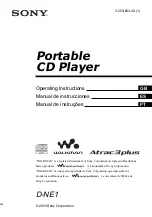
Glossary
ExtremeWare XOS 11.1 Concepts Guide
462
Gigabit Ethernet
This is the networking standard for transmitting data at 1000 Mbps or
1 Gbps. Devices can transmit at multiples of gigabit Ethernet as well.
H
HA
Host Attach. In ExtremeWare XOS software, HA is part of ESRP that
allows you to connect active hosts directly to an ESRP switch; it allows
configured ports to continue Layer 2 forwarding regardless of their
ESRP status.
half-duplex
This is the communication mode in which a device can either send or
receive data, but not simultaneously. (Devices at 1 Gbps or higher do
not run in half-duplex mode; they run only in full-duplex mode.)
header
This is control information (such as originating and destination
stations, priority, error checking, and so forth) added in front of the
data when encapsulating the data for network transmission.
hitless failover
In the Extreme Networks implementation, hitless failover means that
designated configurations survive a change of primacy between the
two MSMs with all details intact. Thus, those features run seamlessly
during and after control of the system changes from one MSM to
another.
I
IBGP
Interior Border Gateway Protocol. IBGP is the BGP version used
within an AS.
ICMP
Internet Control Message Protocol. ICMP is the part of the TCP/IP
protocol that allows generation of error messages, test packets, and
operating messages. For example, the
ping
command allows you to
send ICMP echo messages to a remote IP device to test for
connectivity. ICMP also supports traceroute, which identifies
intermediate hops between a given source and destination.
IGMP
Internet Group Management Protocol. Hosts use IGMP to inform local
routers of their membership in multicast groups. Multicasting allows
one computer on the Internet to send content to multiple other
computers that have identified themselves as interested in receiving
the originating computer's content. When all hosts leave a group, the
router no longer forwards packets that arrive for the multicast group.
IGMP snooping
This provides a method for intelligently forwarding multicast packets
within a Layer 2 broadcast domain. By “snooping” the IGMP
registration information, the device forms a distribution list that
determines which endstations receive packets with a specific multicast
address. Layer 2 switches listen for IGMP messages and build
mapping tables and associated forwarding filters. IGMP snooping also
reduces IGMP protocol traffic.
IGP
Interior Gateway Protocol. IGP refers to any protocol used to exchange
routing information within an AS. Examples of Internet IGPs include
RIP and OSPF.
G
(continued)
Summary of Contents for ExtremeWare XOS 11.1
Page 16: ...Contents ExtremeWare XOS 11 1 Concepts Guide 16...
Page 20: ...Preface ExtremeWare XOS 11 1 Concepts Guide 20...
Page 21: ...1 Using ExtremeWare XOS...
Page 22: ......
Page 78: ...Managing the ExtremeWare XOS Software ExtremeWare XOS 11 1 Concepts Guide 78...
Page 168: ...Virtual LANs ExtremeWare XOS 11 1 Concepts Guide 168...
Page 200: ...Policies and ACLs ExtremeWare XOS 11 1 Concepts Guide 200...
Page 252: ...Security ExtremeWare XOS 11 1 Concepts Guide 252...
Page 265: ...2 Using Switching and Routing Protocols...
Page 266: ......
Page 294: ...Ethernet Automatic Protection Switching ExtremeWare XOS 11 1 Concepts Guide 294...
Page 354: ...Extreme Standby Router Protocol ExtremeWare XOS 11 1 Concepts Guide 354...
Page 416: ...IP Multicast Routing ExtremeWare XOS 11 1 Concepts Guide 416...
Page 417: ...3 Appendixes...
Page 418: ......
Page 432: ...Software Upgrade and Boot Options ExtremeWare XOS 11 1 Concepts Guide 432...
















































